Tag: Milk
Cheesemaking: Making Goat’s Cheese With Ash
The cheese that is made in this recipe is a lactic type goat’s milk cheese with a covering of salt and finely powdered charcoal. It will change from black to a nice blue-gray to white and bloomy surface.

Recipe
What You Need
1 Gallon of Goat’s Milk (Not UltraPasteurized)
1 Packet C20G Chevre Culture
1/16 Tsp C8 Penicillium Candidum
2-3 tsp Salt (non-iodized)
1/4-1/2 tsp Charcoal/Ash
Calcium Chloride (for pasteurized milk)
What To Do
1. Firstly, begin by heating the milk to a temperature of 68-72F. If you heat the milk on the stove, make sure you do it slowly and stir it consistently while it heats.
Add the Chevre and P. candidum culture once the milk is at the desired temperature. Sprinkle the powder to prevent it from becoming clumpy and allow it to sit for 2 minutes before stirring it in so it can re-hydrate.
2. There is enough rennet to ensure a proper set. So now let the milk sit for 18-24 hours while the culture gets to work and the rennet coagulates the curd. The thermal mass should keep the milk warm since this is being done at room temperature anyway. It fine if the temperature does drop a few degrees during the time, but find a warmer space if your room is generally cold.
Remember that the longer you let the curd set, the more acid will be produced.
3. Once the curds have been formed, there will be a thin layer of whey over the curd mass and there may be cracks and separation on the sides. You can test with a knife to see if it is ready. It will show a clean break.
You can now move the curds into the molds with a small spoon to allow the whey to drain. You can drain for 8-20 hours at 68-72F. The time amount has a huge range because it is all dependent on what you want for moisture in your final cheese. This means less time for a sweeter and moister cheese or more time for a drier and tangier cheese.
Note that the bacteria is still working and as long as the whey is present it is able to convert the lactose to lactic acid.
4. To add the ash, you simply need to dust a thin layer of charcoal with no salt after filling the molds about 2/3rds full and then add the rest of the curds.
Once the mold stops dripping whey, it should be firm enough to unmold.
5. The cheese is now ready to be salted. You can mix the charcoal and the salt together. The ratio which is best can be anywhere from 1:5 to 1:8 charcoal to salt ratio, depending on how heavy an ash surface you want on the cheese.
The base salt amount should be about 1 Tsp per cheese and you can apply this by sprinkling about 1/2 per surface. You can even it all out with your hand and spread slightly down the sides. Wait until the salt dissolves and soaks into the cheese body before you salt the other side.
After the salt has been absorbed and no whey drips from the cheese, the cheese can be taken to a space for drying. We are looking for the surface moisture to dry down so that no bright moisture spots can be felt or seen and the surface takes on a matte appearance. This can be done in a room at around 60F with 65-70% moisture. You should place a reed mat or plastic mat under the cheese to allow air movement.
6. Once you have dried the cheese out, it can go to the aging space at 52-56F and 90-95% moisture. This is where it will undergo the final ripening, but must be turned daily to even the moisture and keep the mold from growing into the mats.
After 3 days, you will already see signs of white mold on the surface changing from black to a dusty gray.
After 5 days you will see a full coat develop as the surface becomes light gray as shown in the photo. You would usually see this after 2 weeks when not using charcoal.
After 8-12 days the cheese can be cut as fresh or can be held for several weeks as the surface enzymes continue to work on the proteins, leading to a more complex flavor.
Pasteurized Or Unpasteurized- Which Is Best?
At Shisler’s Cheese House, we home a number of cheeses soft, hard, blue- you name it. These cheeses are either made with pasteurized or unpasteurized milk, it usually comes down to the cheesemakers choice, however, some regulations restrict cheesemakers, for example, Stilton has to be made with pasteurized milk and Comte, which has been subject to many controversies, has to be made using unpasteurized milk.
The biggest wonders that come up when discussing the two kinds of milk are first, is pasteurized milk safer than unpasteurized milk? Secondly, does cheese being made with unpasteurized milk taste better?
The most important subject to discuss is obviously if pasteurized milk is safer. It is not an easily answered question, you need to look at the risks and safety concerns surrounding unpasteurized milk, first.
It is common that cheesemaking rooms will contain lots of different bacteria, mainly good bacteria, but then there are quite a few bad bacterias. Some of the bad bacterias that may be present can contaminate milk or cheese with E-coli, Salmonella, and Listeria. However, there are ways to keep these under control and minimize the risks. Some of these ways are actually part of the cheesemaking processes, such as salt dehydrates, these help a lot because a lot of bacteria requires moisture to thrive. Other processes include appropriate procedures during the handling of the milk, the cheesemaking and the maturing of the cheese, shipping, and packaging.
What Is Pasteurisation?

Pasteurization is the process of heating the milk to around 160 degrees Fahrenheit for 15-25 seconds. This is to kill the pathogens which were mentioned above, not only that, but it kills pretty much everything else, which can be bad as some are important in cheesemaking as they act as a natural defense which comes from the milk. This process also allows for more errors as cheesemakers can become complacent which increases contamination risks. However, that being said, all cheesemakers that Shisler’s Cheese House works with, are never complacent and work to a high and safe standard at all times.
The main thing we believe is that with the safe and controlled handling of milk and cheese, whether it is pasteurized or not, the outcome will be the cheese that is safe to eat, with no significant risks either way.
Does Unpasteurised Milk Taste Better?
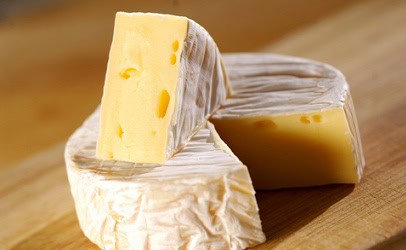
This question is equally as challenging as the previous one. Tying it back into how the process of pasteurization kills all bacteria, good and bad, a lot of friendly cultures essential for tasty cheese are destroyed and therefore they have to be reintroduced back into the milk after pasteurization. However, this still doesn’t help because the microflora is damaged and not passed onto the cheese no matter what. This poses a potential drawback in using pasteurized milk. That being said, it’s not justifiable to just say that unpasteurized milk is better, it is indeed a big factor for great cheese which has the potential to make better cheese. Then again, there are many amazing pasteurized milk kinds of cheese because of the skill of the cheesemaker.
In conclusion, cheeses which are made with unpasteurized milk are equally as safe to eat as those made with pasteurized milk and cheese which is made with unpasteurized milk has potential to taste better but that is just one of the factors that go towards the overall quality of cheese.
All About Organic Cheeses- Are They Better For You?
If you are a cheese lover, it is already hard enough to choose between your favorite Mozzarella, Stilton or Cheddar. Not only that but in recent years, creameries have created another delicious choice for us: Organic.
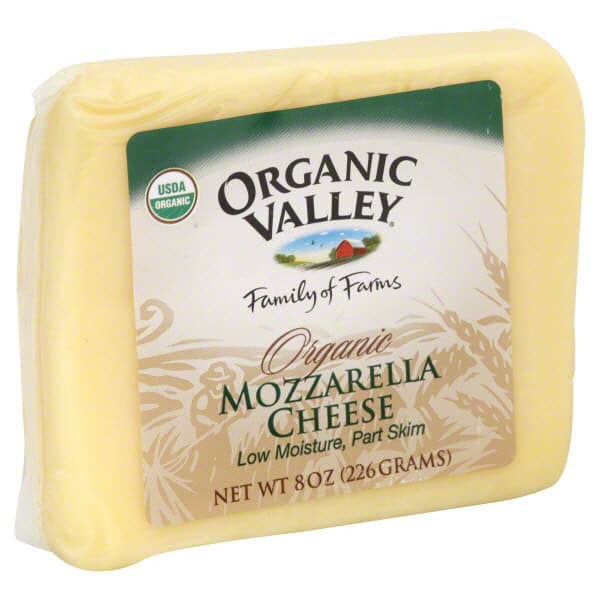
Image Source: gianteagle.com/93966253702.aspx
Organic cheese is very much like many other organic agricultural products on the market, organic cheese is produced without the use of antibiotics, growth hormones, or dangerous pesticides. The milk used to produce the organic cheese comes from all organic farms where cows only eat organically grown grasses. The cheese is also free from artificial coloring or flavorings, and a lot of the time, enzyme rennet, which is used to curdle the milk, is not made from animals or genetically engineered. In place of them are naturally occurring enzymes, making organic cheese not only delicious but safe for vegetarians too.
Why You Should Buy Organic
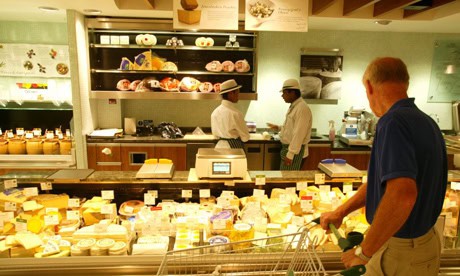
Image Source: pinterest.com/pin/548946642051275268/
It is always the case that when you buy food, it is important to find something that tastes good, and is generally good for you. The good thing about organic cheese is that they are often superior in taste and quality and have received many rewards from cheese connoisseurs and professional critics.
While organic cheese is great for your taste buds, the benefits of buying it stretch farther than just your body. Buying it positively affects everything from your personal health to farm animal welfare, to even the earth’s endangered environment. To put it all into perspective:
Organic Cheese Affects On Your Health
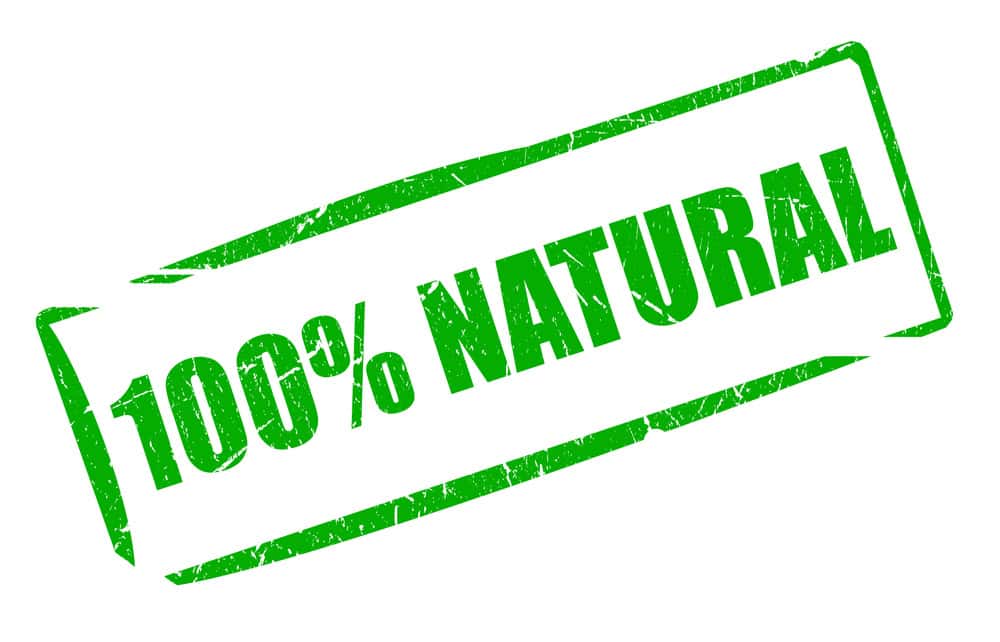
Organic cheese contains all the goodness from regular cheese, including the high levels of protein and calcium. However, research has proven that due to cows having a natural pasture-fed diet, cheese made from organic milk is much higher in nutritional value.
– Research has shown that there are more Antioxidants in organic cheese, with it being 2-3 times higher in antioxidants such as lutein. It is also proven that organic milk is up to 50% higher in vitamin E and 75% higher in beta-carotene. They all fight damaging free radicals and can perhaps aid the prevention of cancer and heart disease.
– Studies have shown that there are more Omega-3s, containing up to 71% more than non-organic milk. Omega-3s are vital for maintaining a healthy heart, strong bones and teeth and flexible joints.
– Organic cheeses also lower the exposure to the toxins and pesticides that often come from factory farming practices. This is very important for children in particular because their rapidly growing nervous systems are more sensitive to the effects of these harmful compounds.
The Welfare Of Animals

Image Source: renewingallthings.com
Another great thing about organic farming is that organic dairy farmers are also committed to the humane treatment of farm animals. Cows are not pumped with protein or antibiotics to force them into producing more than their natural capacities. They are kept in good health, fed an organic diet and have access to fresh air, natural light, and open pasture as much as possible.
Also, another important part of organic farming is that if the cows become sick, they are treated holistically with homeopathic medicines whereas, at non-organic farms, cows are routinely given antibiotics to prevent infection, even when they are healthy. While antibiotics are useful for fighting disease, they become less effective when used excessively. This has an onset effect for humans as we are being exposed to the antibiotics and they may lose effectiveness in treating humans too.
The Effects On The Environment
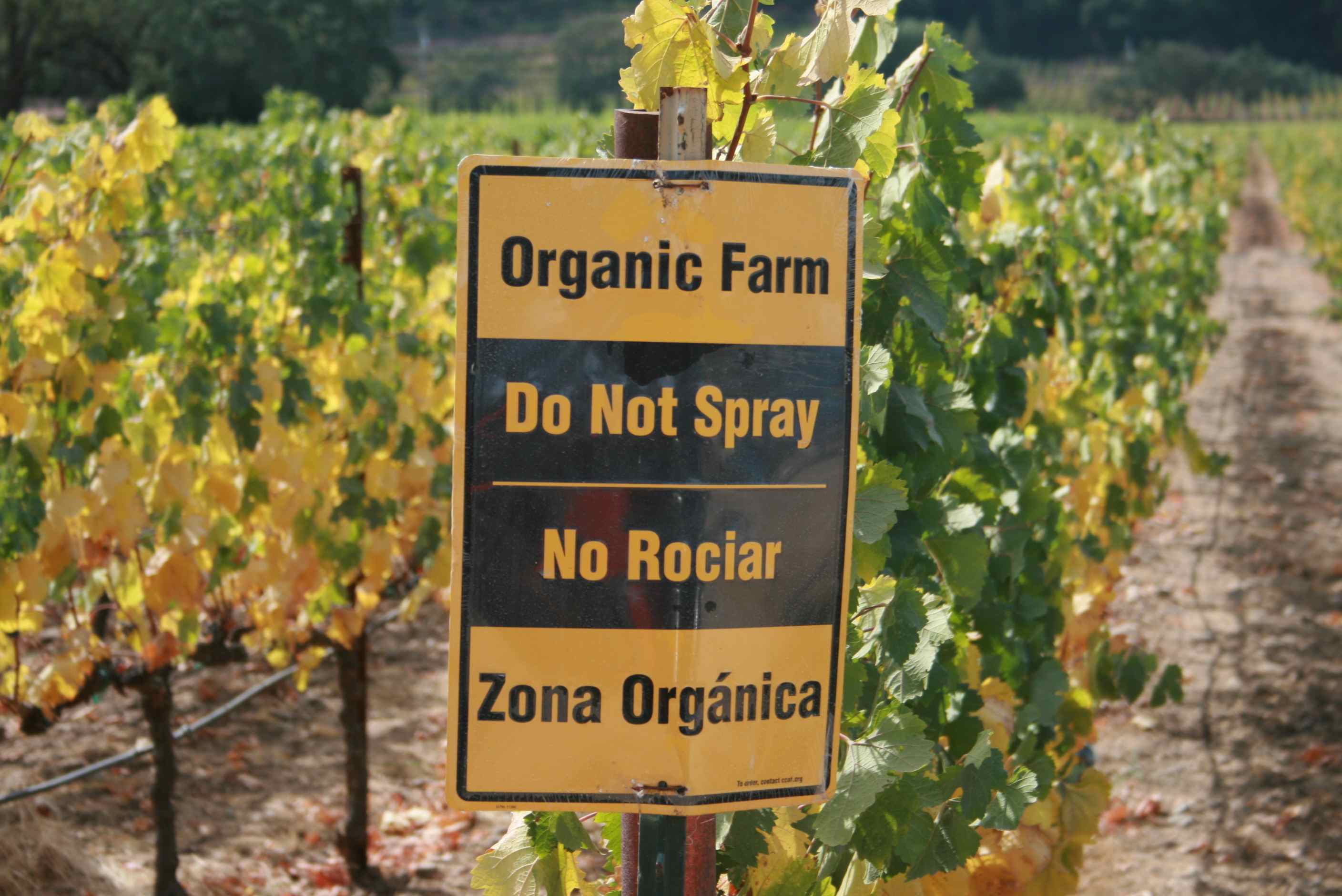
Image Source: therealwinerepublic.com/
You wouldn’t think that organic farming would have an effect on the environment, but it actually does. Organic farmers are not permitted to use chemicals that pollute the air, water or food. Instead, organic farmers use non-toxic pest control methods and sustainable farming techniques like crop rotation and composting. These methods ensure rich, healthy soils while conserving water and fossil fuels. They also are encouraging to wildlife, which has drastically declined over the last 50 years.
How To Know If It’s Organic

Image Source: ota.com/organic-101/organic-standards
Labeling is definitely important when cheese buyers are seeking higher nutritional value, toxin free and humane farming practices. In the U.S. it is the law to have certified organic labeling. There are numerous standards which are enforced by organic certification authorities. If you are in doubt, it is best to check your cheese packaging for organic accreditation. When cheese is labeled organic, it must contain at least 95% organically produced raw or processed agricultural products. Labels will usually contain the standard USDA certification.
Best Cheeses To Eat As The Weather Turns Colder
 Source: http://www.dairyinstitute.org/wp-content/uploads/2015/02/cheese2.jpg
Source: http://www.dairyinstitute.org/wp-content/uploads/2015/02/cheese2.jpg
Cheese is great anytime of the year, but as with many foods out there, cheeses can be different in taste, texture, and quality with the changing of the seasons. For example, a number of cheeses will exhibit their peak flavor and texture during the cooler/colder months of the year. These types of cheese are classified into two groups, that is (1) cheeses made from the milk of animals that is produced during peak spring and summer months, usually falling between May and October and (2) cheeses made from the milk of animals produced during peak fall and winter months, usually falling between November and March).
Not only do cheeses themselves vary fundamentally from season to season, but they can also exhibit distinct seasonal variability from region to region. This revolves around when the temperatures turn too cold for animals to remain outside. During peak spring and summer months, animals producing dairy products consume fresh grass, wild flowers, herbs and any other plants, shrubs or grasses that nature may sprout up. On the contrary, as the weather turns colder, these animals remain in sheltered environments and their diets consist mainly of dried hay or silage (grasses which are harvested and gathered at their peak state and preserved for the winter by fermentation processes). With this change in seasonal diets, particularly during the winter months, the animal still produces milk, albeit, the volume and flavors are not at their peak as they would be in spring and summer dairy production; during the spring and summer months, the milk has a distinct sweet, herbal flavor from the grasses and wild flowers the animals consume from the mountain side.
While a number of cheeses are best when aged, this is not the case for all cheeses. Non-aged cheeses are at their peak during the spring and summer months. This would include cheeses such as mozzarella, feta and chevre. Cheeses which are aged, however, can take a longer time to reach their peak flavor and texture. This means that cheeses made from animals’ milk during the spring and summer months may have to wait until the following year to be able to enjoy the full value of the cheese.
Cheeses made from animals’ milk in the spring and summer months which are at their peak flavor and texture by the following winter are:
- Appenzeller
- Comte
- Gruyere
- Colston Basset Stilton
- Cabrales
- Morbier
- Raclette
- Rogue River Blue
- Uplands Cheese Pleasant Ridge Reserve
With the colder months of winter, come cheeses that are produced from the milk of animals whose diet consists mainly of dried hay. These cheeses will be void of many of the distinct, vibrant flavors of cheeses produced from milk produced in spring and summer. However, cheese produced from milk during winter months have a higher fat content which yields very rich cheeses. One of the most highly touted cheeses on the planet comes from winter milk from the same breed of cows that produce summer milk that makes Gruyere called, Vacherin Mont d’Or.
Because of the overall decrease in the overall production of milk during the winter months, winter milk cheeses are generally on the smaller end of the size spectrum while the aging process is over a much shorter time period.
Is Raw Cheese Healthy or Unhealthy?
We’ve all eaten cheese at some point in our life, unless health reasons prohibit us from doing so. But what is “raw” cheese? No, it is not cheese that is not cooked thoroughly. Instead, raw cheese is made from milk that is not pasteurized. For a while now, food critics and health experts alike have continually debated the benefits and disadvantages that consuming raw cheese can have on one’s health.
Consuming unpasteurized cheese is considered the thing to do today, as buying artisanal foods as such is trending very high in today’s market. There are some who believe consuming cheese’s raw version is a healthier option than its counterpart, pasteurized cheese. However, as some would believe that raw cheese promotes health, there are others that contradict such claims.

THE BENEFITS
As program director at Oldway’s Coalition, Carlos Yescas, noted, there are a number of benefits to eating raw cheese. Among the key benefits are the diversity of microorganisms that are contained within the raw cheese. While uncertainties still remain due in large part to the human biological response to these microorganisms, the majority of the microbes present in raw cheese have the ability to combat disease and bodily infections. While many folks have shown concern with raw cheese and its production, Yescas assures that at the forefront of safety measures for producing raw cheese, is the diligence in making certain that good milk is sourced. It is the cheese-makers utmost priority to ensure that quality of the milk is superior which includes animal living conditions, animal nutrition and diets and animal husbandry. Because of the great risk involved when not pasteurizing the milk, a great deal of time, energy and resources are invested in making certain the conditions surrounding the milking-process is pristine.
Raw milk also has similar nutrients that are normally contained in pasteurized cheese, such as protein and calcium, among others while tasting identical to their counterparts.
THE DISADVANTAGES
Normally, you’ll find the cheese-making process to use milk that has been pasteurized. The pasteurization process involves heating the milk to destroy and pathogenic microorganisms that might be harmful, while maintaining its integrity of nutritional quality. In some cases, the pathogenic microorganisms can make you fall ill, especially those with lower immune systems like children, pregnant and breastfeeding women, older folks and those with chronic diseases. It is best advised to not consume raw cheese if under these conditions.
THE FINAL SAY
A number of raw cheeses can be found at local markets, by local producers. It is of the utmost importance to check and ensure that the conditions and environment of where the cheese is kept up to health and safety regulations. If you decide to consume raw cheese, make certain you are aware of where you are buying it from and how the methods in which the producer treats and raises the cows for milking.



